In the vast realm of historical fiction, few authors shine as brightly as Ken Follett. With a pen that weaves tales of suspense, intrigue, and historical grandeur, Follett has established himself as a literary luminary.
In this article, we embark on a journey through the 10 best books by Ken Follett, exploring the captivating worlds he creates and understanding why these novels stand out among the rest.
Who Is Ken Follett?
Ken Follett, a prolific Welsh author born on June 5, 1949, is celebrated for his ability to transport readers through time and space with his compelling narratives.
His diverse body of work spans genres, from thrillers to historical sagas, each marked by meticulous research and an uncanny knack for storytelling.
Follett’s breakthrough came with “The Eye of the Needle” in 1978, and since then, he has consistently delivered literary gems that captivate audiences worldwide.
10 Best Books By Ken Follett
Below are the top 10 best books by Ken Follett:
1. The Pillars Of The Earth (1989)
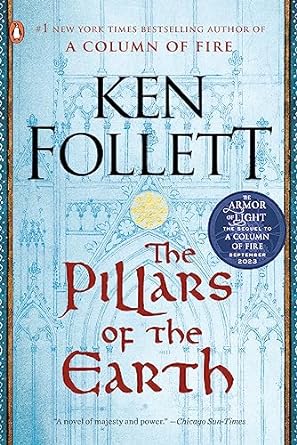
Ken Follett’s magnum opus, “The Pillars of the Earth,” is a sprawling epic that unfolds against the backdrop of 12th-century England. The narrative revolves around the construction of a cathedral in the fictional town of Kingsbridge, becoming a metaphor for the resilience of the human spirit amidst political turmoil and personal triumphs and tragedies.
Follett meticulously captures the social, political, and religious intricacies of the time, immersing readers in a meticulously researched historical setting. The characters, spanning all walks of life, come to life with vivid detail, making their struggles and triumphs deeply resonant.
As the construction of the cathedral progresses, it symbolizes not only architectural ambition but also the indomitable human spirit in the face of adversity.
2. World Without End (2007)
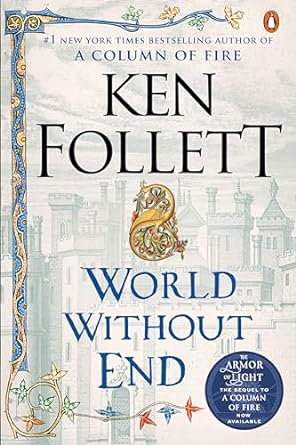
In “World Without End,” Follett revisits the fictional town of Kingsbridge two centuries after the events of “The Pillars of the Earth.” This masterful sequel spans generations, exploring the lives of new characters intricately connected to the original tale.
Themes of love, power, and societal evolution are interwoven against the backdrop of historical events, showcasing Follett’s ability to craft narratives that transcend time. The novel delves into the challenges of a changing world, where the echoes of the past reverberate into the future.
With rich character development and a gripping plot, “World Without End” cements Follett’s reputation as a master storyteller who seamlessly blends history with fiction.
3. The Eye Of The Needle (1978)
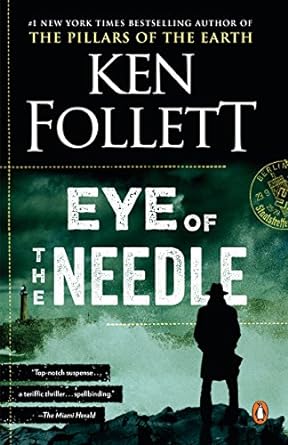
Set against the backdrop of World War II, “The Eye of the Needle” catapulted Follett to international acclaim. This taut thriller follows the story of a German spy, codenamed “The Needle,” whose espionage activities become a high-stakes race against time.
The novel masterfully combines historical accuracy with pulse-pounding suspense, portraying the personal costs of espionage and the complexities of wartime loyalties. Follett’s meticulous research brings the era to life, immersing readers in the tension and uncertainty of the war.
The characters are intricately developed, and the plot unfolds with twists and turns that keep readers on the edge of their seats, making “The Eye of the Needle” a timeless classic in the genre of historical espionage.
4. Fall Of Giants (2010)
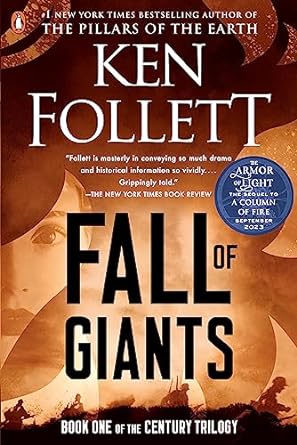
The first installment of the Century Trilogy, “Fall of Giants,” takes readers on a panoramic journey through the early 20th century. Follett skillfully interweaves the lives of five interconnected families from different corners of the globe, capturing the seismic shifts of historical events.
From the outbreak of World War I to the Russian Revolution, the novel explores the personal and political impacts of these transformative moments. Follett’s ability to balance individual narratives with grand historical events is on full display, creating a rich tapestry of human experiences.
“Fall of Giants” is not just a historical saga; it’s a reflection on the forces that shape nations and individuals, offering a profound exploration of the human condition against the backdrop of a changing world.
5. The Key To Rebecca (1980)
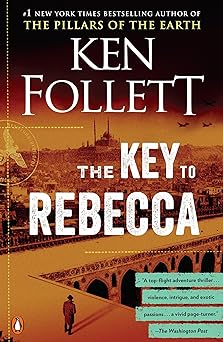
“The Key to Rebecca” transports readers to the heart of World War II-era Cairo, where a German spy known as “The Needle” aims to undermine the Allied forces. Follett’s storytelling prowess shines as he combines historical accuracy with a gripping narrative of espionage, love, and betrayal.
The characters are finely drawn, and the tension builds steadily as the plot unfolds. Follett captures the intricacies of wartime intelligence operations, providing a nuanced and realistic portrayal of the challenges faced by both spies and the people caught in the crossfire.
As “The Needle” navigates the treacherous landscape of wartime espionage, readers are treated to a thrilling and immersive experience that showcases Follett’s ability to bring history to life with vivid detail.
6. A Dangerous Fortune (1993)
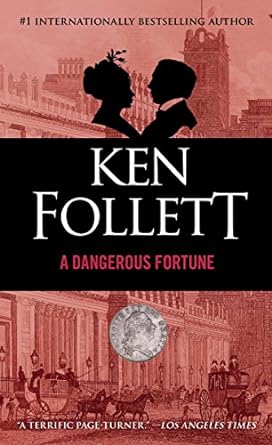
Set in Victorian London, “A Dangerous Fortune” is a gripping tale of financial intrigue, family secrets, and scandal that unfolds against the backdrop of a banking empire. Follett skillfully weaves together the lives of a diverse cast of characters, exploring the moral dilemmas and societal expectations of the time.
The novel delves into the intricacies of power, greed, and the consequences of unbridled ambition. Follett’s ability to capture the essence of the Victorian era, from its societal norms to its economic dynamics, adds depth and authenticity to the narrative.
As the characters grapple with their own desires and the machinations of a corrupt financial system, “A Dangerous Fortune” unfolds as a riveting exploration of the human condition in a time of societal upheaval.
7. The Man From St. Petersburg (1982)
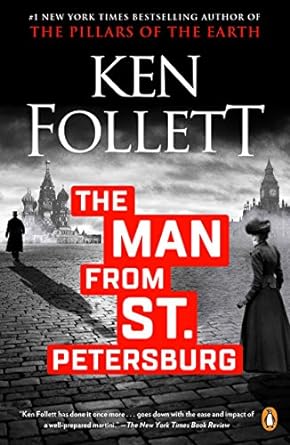
Set against the backdrop of pre-World War I Europe, “The Man from St. Petersburg” is a historical thriller that explores the collision of political ideologies and personal loyalties.
The novel follows a Russian anarchist’s plot to assassinate a British cabinet minister, intertwining the lives of characters from different walks of life. Follett skillfully navigates the complex web of political intrigue, romance, and espionage, creating a narrative that keeps readers enthralled from start to finish.
The historical setting is vividly rendered, capturing the tensions and uncertainties of a world on the brink of war. With a compelling mix of historical detail and compelling characters, “The Man from St. Petersburg” stands as a testament to Follett’s ability to craft narratives that entertain and enlighten in equal measure.
8. Edge Of Eternity (2014)
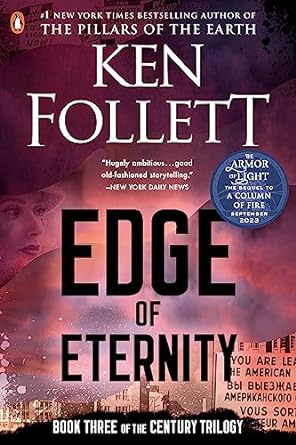
The final installment of the Century Trilogy, “Edge of Eternity,” is a sweeping narrative that navigates the tumultuous mid-20th century. From the Cold War and Civil Rights Movement to the Vietnam War, Follett expertly weaves together the personal and political dramas of his characters.
The novel provides a panoramic view of historical events, offering insights into the challenges and triumphs of the era. As characters grapple with the shifting tides of history, their personal journeys become intertwined with the larger narrative of societal change.
Follett’s ability to balance the intimate stories of individuals with the grand canvas of history is a testament to his narrative skill. “Edge of Eternity” not only serves as a fitting conclusion to the Century Trilogy but also stands alone as a powerful exploration of the human experience in a time of profound transformation.
9. A Place Called Freedom (1995)
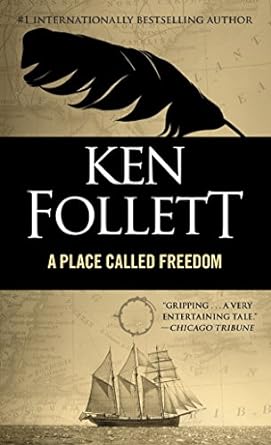
“A Place Called Freedom” transports readers from the Scottish coal mines to the American frontier in a historical saga that explores themes of freedom, love, and the pursuit of a better life. The novel follows the life of Mack McAsh, a coal miner who seeks freedom from the oppressive conditions of 18th-century Scotland.
As Mack’s journey takes him across the Atlantic to the New World, Follett paints a vivid portrait of the challenges and opportunities presented by the American frontier. The novel is a testament to Follett’s ability to create characters who resonate with readers on a personal level.
Against the backdrop of historical events, “A Place Called Freedom” becomes a compelling exploration of the human spirit’s indomitable quest for liberty and self-determination.
10. Code To Zero (2000)
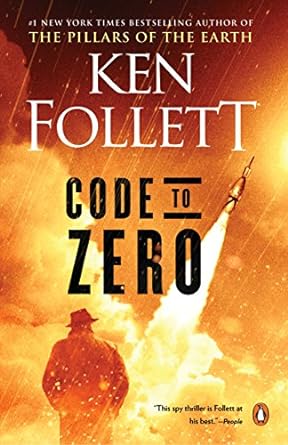
In “Code to Zero,” set against the backdrop of the Cold War and the space race, Follett delivers a suspenseful tale of amnesia, espionage, and the race to uncover a deadly secret.
The protagonist, Luke Lucas, wakes up in a Washington, D.C., park with no memory, setting the stage for a gripping narrative that unfolds with intensity and intrigue. As Luke races against time to unravel the mysteries of his past, Follett skillfully integrates historical events and scientific advancements into the plot.
The novel captures the paranoia and high-stakes atmosphere of the Cold War era, providing readers with a thrilling blend of mystery and historical drama. With its expertly crafted plot twists and well-developed characters, “Code to Zero” exemplifies Follett’s mastery of the thriller genre and his ability to keep readers on the edge of their seats.
FAQs about Best Books By Ken Follett
1. What makes Ken Follett’s historical fiction stand out?
Follett’s meticulous research and ability to blend historical accuracy with compelling narratives set his work apart.
2. Is it necessary to read Follett’s books in chronological order?
While some series benefit from sequential reading, most of Follett’s works are standalone, offering flexibility to readers.
3. Which book is the best entry point for someone new to Ken Follett’s novels?
“The Pillars of the Earth” serves as an excellent introduction to Follett’s storytelling prowess.
4. Are there recurring themes in Follett’s books?
Themes of love, power, betrayal, and resilience pervade Follett’s body of work, irrespective of the historical setting.
5. Why does Follett often choose historical settings for his novels?
Follett is drawn to historical periods that offer a rich backdrop for exploring human dynamics and societal shifts.
6. Are there any film or TV adaptations of Ken Follett’s books?
Yes, some of Follett’s works, including “The Pillars of the Earth” and “World Without End,” have been adapted into successful television miniseries.
7. Does Follett have a preferred genre, or does he explore various genres in his writing?
Follett’s versatility is evident in his exploration of genres, from historical fiction and thrillers to family sagas.
8. Are there common elements in Follett’s protagonists across different books?
Many of Follett’s protagonists are ordinary individuals thrust into extraordinary circumstances, showcasing the resilience of the human spirit.
9. How does Follett balance historical facts with fiction in his novels?
Follett conducts extensive research to ensure historical accuracy, infusing his fictional narratives with a sense of authenticity.
10. Which book of Ken Follett’s has received the most critical acclaim?
“The Pillars of the Earth” is widely regarded as one of Follett’s masterpieces, earning critical acclaim and a dedicated fan base.
In the literary tapestry woven by Ken Follett, each novel is a vibrant thread contributing to the rich narrative he has crafted over decades. From the medieval majesty of “The Pillars of the Earth” to the Cold War suspense of “Code to Zero,” Follett’s works are a testament to his storytelling prowess.
Whether you’re a history enthusiast, a thriller aficionado, or simply a lover of finely crafted tales, Ken Follett’s 10 best books offer a literary journey through time that is both exhilarating and unforgettable.
Embark on this literary adventure, and let Follett’s mastery transport you to worlds where history comes alive, and the human spirit perseveres against all odds.
